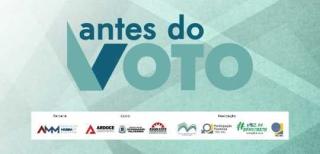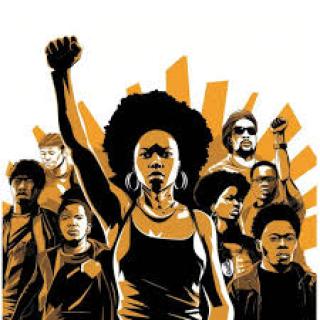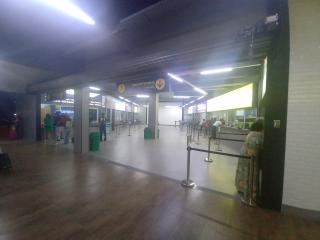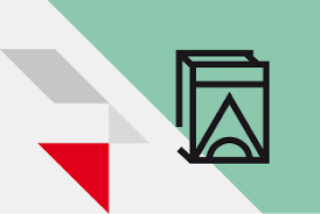Although Laos’ economy was humming along at 6-7 percent growth in its gross domestic product (GDP) per year throughout much of the decade before the coronavirus outbreak, the country was badly hit by the pandemic. Indeed, growth in 2020 was registered at just 0.2 percent as the pandemic inflicted a crippling squeeze on its biggest export industries, including food, electricity and metals, and remittances from the Laotian diaspora of workers in neighbouring countries. And although Laos fully reopened its borders on May 9, ending most of its pandemic restrictions in the process, mounting public debt and rising global prices are now threatening Laos’ macroeconomic stability and living standards, according to the Lao PDR Economic Monitor—”Restoring Macroeconomic Stability to Support Recovery”.
“It is on the brink of default,” Anushka Shah, vice president and senior credit officer at Moody’s Investors Service, declared in no uncertain terms in mid-June. The ratings agency downgraded Laos’s credit rating one notch to Caa3 at the time, citing poor governance, a very high debt burden and insufficient foreign exchange reserves to cover maturing external debt as the chief factors underpinning this deterioration. Indeed, Laos’ foreign exchange reserves are so low that many now believe it requires external assistance to help fulfil its debt obligations. As such, it currently remains at a high risk of default. The World Bank estimated that Laos had reserves of only $1.3 billion at the end of last year, enough to cover a little over two months of imports.
Things have only worsened since then. “Default risk will remain high given very weak governance, a very high debt burden and insufficient coverage of external debt maturities by foreign exchange reserves,” Moody’s stated following the downgrade. “If the government relies more heavily on domestic borrowing in the absence of other external financing sources materialising, it could face difficult policy choices between curbing inflationary pressures and addressing repayment on domestic debts or public services at a time when the population faces a sharp increase in the cost of living.”
Fitch Ratings has taken a similar view on Laos, grading the 7.5 million-strong Southeast Asian nation at CCC, indicating that default is a real possibility. “There is pretty significant foreign exchange liquidity pressure at this point, which seems most recently to be the result of rising oil prices and what that means for the import bill,” Jeremy Zook, Fitch’s lead sovereign analyst for Laos, told The Financial Times in mid-June. “Foreign exchange has become quite limited.”
To compound matters, annual inflation has been surging this year and hit a 22-year high in June of 23.6 percent, as rising prices of oil and other imports—on which Laotians are highly dependent—have seriously eroded the population’s purchasing power. Reports suggest that the rising price of petrol, cooking gas, food imports and other essentials are particularly damaging. “COVID-19 created global inflationary pressures as a result of disrupted supply chains and rising food and fuel prices,” Alex Kremer, World Bank Country Manager for Laos, recently explained. “This problem is now being made worse by various factors, including the war in Ukraine, and some Lao people are missing meals as they try to cope with a situation out of their control. While people are trying to return to normal, they face difficulties and many need help.”
The weakening of its currency hasn’t helped either; indeed, the kip has lost almost half its value in just the last 12 months, making the import price even more expensive. “Agriculture is difficult to grow because of the increase in the price,” one woman told Radio Free Asia on June 8. “How can these people force the farmers to say that now they go to the market for a hundred thousand dollars to buy only 100 baht of fish and flour for 25,000 kip, but now it has increased to 100 and 50,000 kip?”
And as has been the case with economic crises engulfing the likes of Sri Lanka and Turkey in recent months, the roles of political incompetence and economic mismanagement in bringing Laos to the brink of default cannot be ignored. For instance, the Nikkei Covid-19 Recovery Index, which assessed vaccination rollouts and COVID-19 management efficiency in more than 120 countries, ranked Laos in last place thanks to a decidedly lacklustre vaccination rollout implemented by the government under Phankham Viphavanh, who became prime minister in March 2021.
“The communist government, which offered relatively little financial assistance to people during the pandemic, has blustered,” David Hutt, a research fellow at the Central European Institute of Asian Studies (CEIAS), wrote in The Diplomat on June 23. “Phankham’s cabinet is perceived as having acted too slowly; it only created a special economic task force on June 6, for instance. It’s also accused of badly communicating the crisis to the public.”
As such, many Laotians have become dismayed at the government’s perceived incompetence this year. Could nationwide protests engulf the country in a similar vein to that of Sri Lanka? “What is more likely to happen, if the LPRP [Lao People’s Revolutionary Party] were to try and appease the public to buy time until the economic crisis wanes, is to sacrifice some top-level officials, ministers or even Prime Minister Phankham Viphavanh,” according to Harrison Cheng, an associate director at Control Risks, who spoke to Bloomberg in mid-June. “The question is whether the LPRP can beat the clock, given the severe debt crisis and no clear end to rising inflation.”
Indeed, soon after, the prime minister reshuffled certain government positions, with incumbent chiefs at the central bank and the Ministry of Industry and Commerce replaced and sent to take up positions as ministers in the Prime Minister’s Office instead. Phankham has also assembled a new task force to address the economic problems plaguing Lao citizens. And according to local reports, Laos’ central bank adopted a policy of strict currency controls in an attempt to stabilise the kip, with money changers being prohibited from engaging in foreign-exchange trading with organisations and companies. “Currency exchange units will only be allowed to change money for individuals and tourists, up to a maximum 15 million kip per person per day,” the now-former governor of the Bank of the Lao PDR, Sonexay Sitphaxay, confirmed. “This means that companies and other legal entities must sell and buy foreign currencies at commercial banks.”
But Vientiane’s approach to tackling its mammoth debt crisis will ultimately determine how quickly it will emerge from this economic crisis. Laos’ foreign and domestic debts have ballooned to more than $14 billion, equivalent to around 88 percent of gross domestic product (GDP). And figures from the government and Fitch show that it needs to make foreign-debt repayments of an average of $1.3 billion per year through 2026, which equates to approximately half of the government’s annual revenue. Its currency depreciation has only exacerbated the situation, making repayments to overseas creditors in foreign currencies all the more expensive. Indeed, Laos’ foreign debts are priced in several currencies, including the US dollar, the Thai baht, the Chinese yuan, the Japanese yen, the Korean won and the euro.
“In the face of narrowing financing options, even to meet limited financing needs, Laos’ reliance on external and domestic commercial financing will increase, resulting in a higher exposure to market sentiment,” according to Moody’s. Around half of its debt is owed to neighbouring China, which it has partnered with in recent years to expand its infrastructure capabilities. At the heart of this infrastructure drive is the $6-billion high-speed rail line, which connects China’s southern city of Kunming with Laos’ capital city, Vientiane. The line opened in December 2021 and is now being designed to continue southwards from Vientiane to Bangkok and even beyond as far as Singapore. To finance the construction of the China-Laos section of the project, $3.4 billion was provided in loans from China’s state-owned Export-Import Bank, according to figures from the World Bank.
Laos may thus look towards bilateral financing deals to alleviate some of its debt woes, according to Thomas Rookmaaker, Fitch’s head of Asia Pacific sovereign ratings. This would likely mean reaching a deal with China, its biggest creditor, to either agree to some form of debt forgiveness or restructure its outstanding debt and make repayments more manageable. This is an achievable goal; after all, China has already restructured its infrastructure loan agreements with several countries to help them repay their obligations more easily.
To its credit, China had previously offered relief on around $800 million of debt in 2020 and 2021, according to Fitch, although whether this is in the form of reducing the amount owed or deferred payments was not determined. And China’s Foreign Ministry has recently confirmed that it “supports relevant financial institutions to negotiate with Laos and properly solve the debt problem, and is willing to continue to provide assistance to Laos in its ability to cope with current difficulties”.
Indeed, much will ultimately depend on Beijing’s willingness to help Laos escape its economic quagmire. Fortunately, it seems that extending this help would be the politically expedient action to take, especially so soon after the launch of the high-speed rail project, and also given the scrutiny China has recently faced with regard to the nature of its other infrastructure-loan deals, particularly those it has agreed with countries in Africa and Latin America. “No doubt Laos faces economic and financial difficulties that are tremendous and worryingly severe, but I don’t think China will let Laos default,” according to Toshiro Nishizawa, a professor at the University of Tokyo’s Graduate School of Public Policy and a former fiscal adviser to the Laos government. “The size of debt obligations alone appears to suggest that default is inevitable, but geo-economic factors make such simple predictions unrealistic in favour of Laos.”









